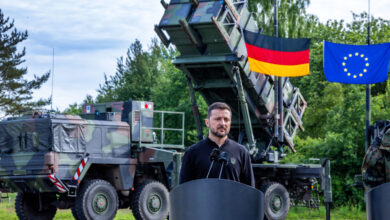India Discusses $4B Russian Radar Purchase to Track Chinese ICBMs, Stealth Fighters
Indian officials have discussed the potential purchase of an advanced long-range early warning radar system with their Russian counterparts.
The over $4 billion potential purchase of the Voronezh radar is at an advanced stage of discussion, Indian newspaper The Sunday Guardian revealed, citing sources.
A Russian delegation involving members of manufacturer Almaz-Antey took part in the discussion.
Led by deputy chairman Vladimir Medovnikov, the team also met with their potential Indian offset partners as the deal includes at least 60 percent component manufacturing in India, the outlet added.
The system is expected to be discussed during Indian Defense Minister Rajnath Singh’s Russia visit this week.
Additional issues likely to be discussed during the bilateral meeting include “prospective joint venture projects, supplies of spare parts for India’s fleet of Russian-origin warplanes and warships, and deliveries of two remaining S-400 Triumph missile defense systems,” according to Russia Today.
Voronezh Radar
Russia operationalized the first Voronezh radar in Lekhtusi near St. Petersburg in 2009.
The sensor is capable of detecting ballistic missiles and stealth aircraft from vertical and horizontal ranges of 8,000 and 6,000 kilometers (4,971 and 3,728 miles), respectively.
The radar series comprises four variants: the M, DM, SM, and VP. It’s unclear which variant New Delhi might purchase.
According to Indian Air Force Air Marshal (retired) Anil Khosla, the radars collect data — target trajectory, speed, and classification — and send them to a central processing hub.
The central system then fuses the information with data from other sources, such as radars, satellites, and sensors, to create a real-time consolidated picture of a particular region.
To Enhance India’s Layered Air Defense
The radar is likely to fit seamlessly with India’s layered air and missile defense system, including the Russian-origin S-400.
According to the Bureau of Military-Political Analysis’s Alexander Mikhailov, the Voronezh could enhance the S-400’s detection range over 10 times from 600 kilometers (373 miles).
“When a satellite detects a launch, it alerts the Voronezh radar, which then confirms or refutes the threat,” Sputnik India quoted Mikhailov as saying.
“The key role of these radar systems is to verify the presence of a threat, such as a mass launch of intercontinental ballistic missiles, and provide crucial information for interception.”
The radar’s likely deployment is in southern India’s Chitradurga, Karnataka, which would allow it to keep an eye on the Indian Ocean region and across both its northern and western borders with China and Pakistan.
“In South Asia, India faces growing security challenges, including the potential deployment of advanced missile systems by neighboring countries. An advanced radar like Voronezh would enable India to maintain technological parity and address evolving threats,” Khosla told Sputnik India.
In addition to ballistic missiles, the radar can be used for space surveillance, tracking debris, and monitoring other terrestrial objects.












